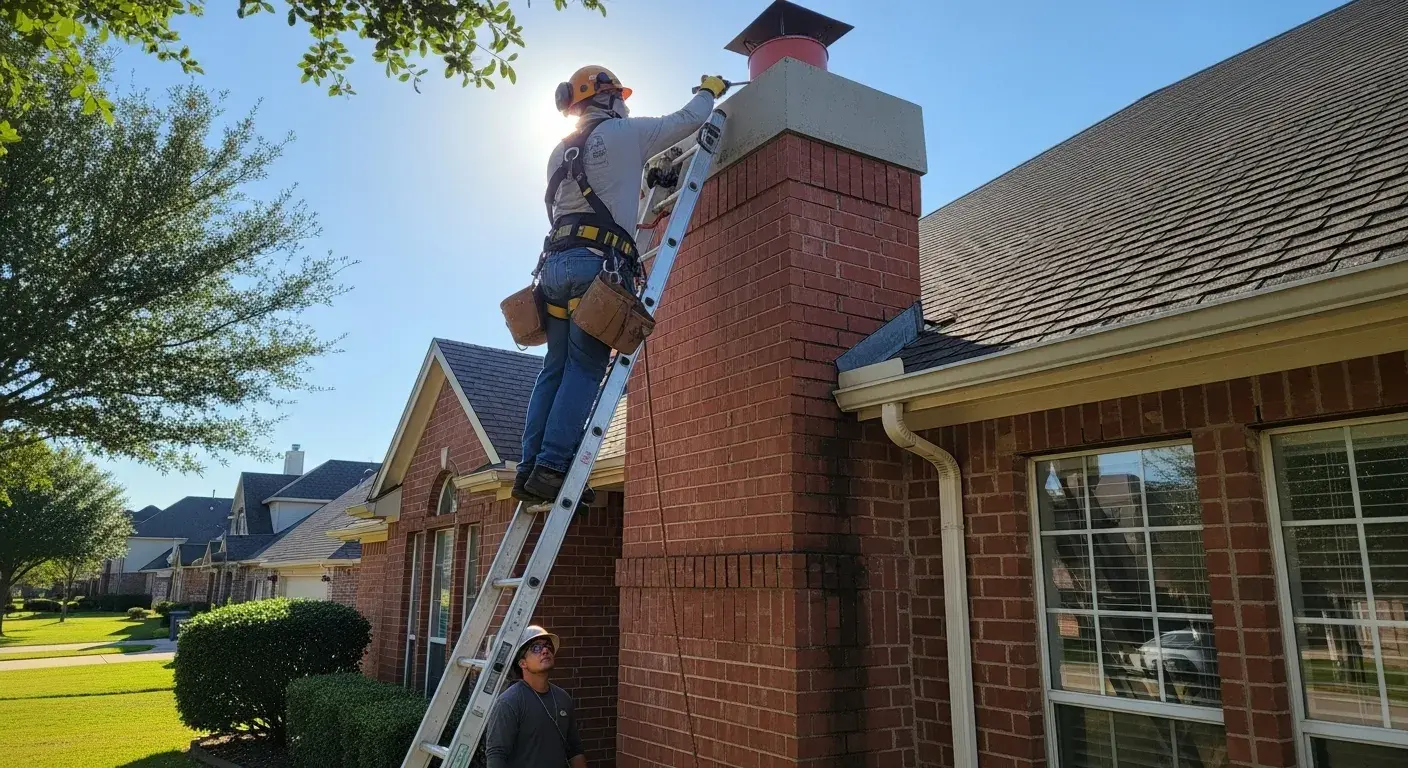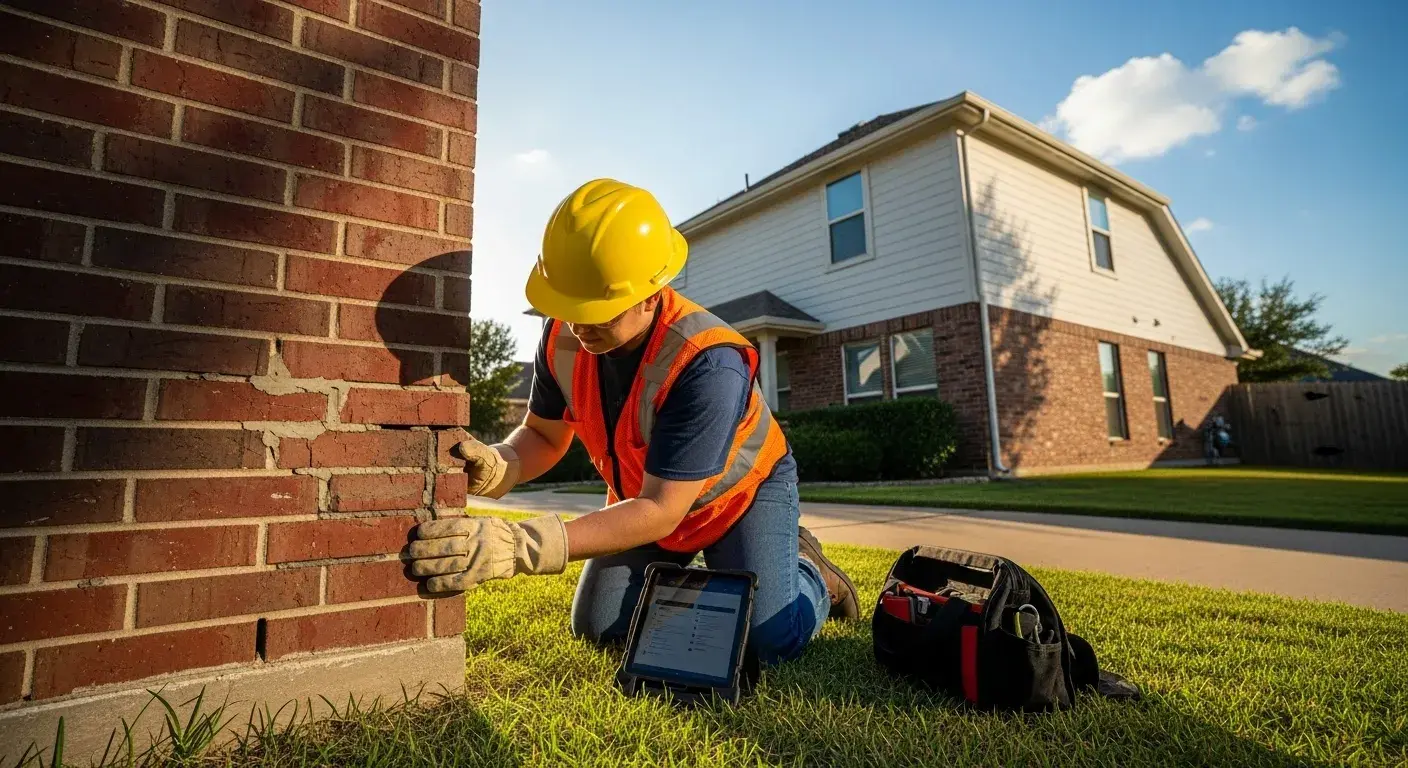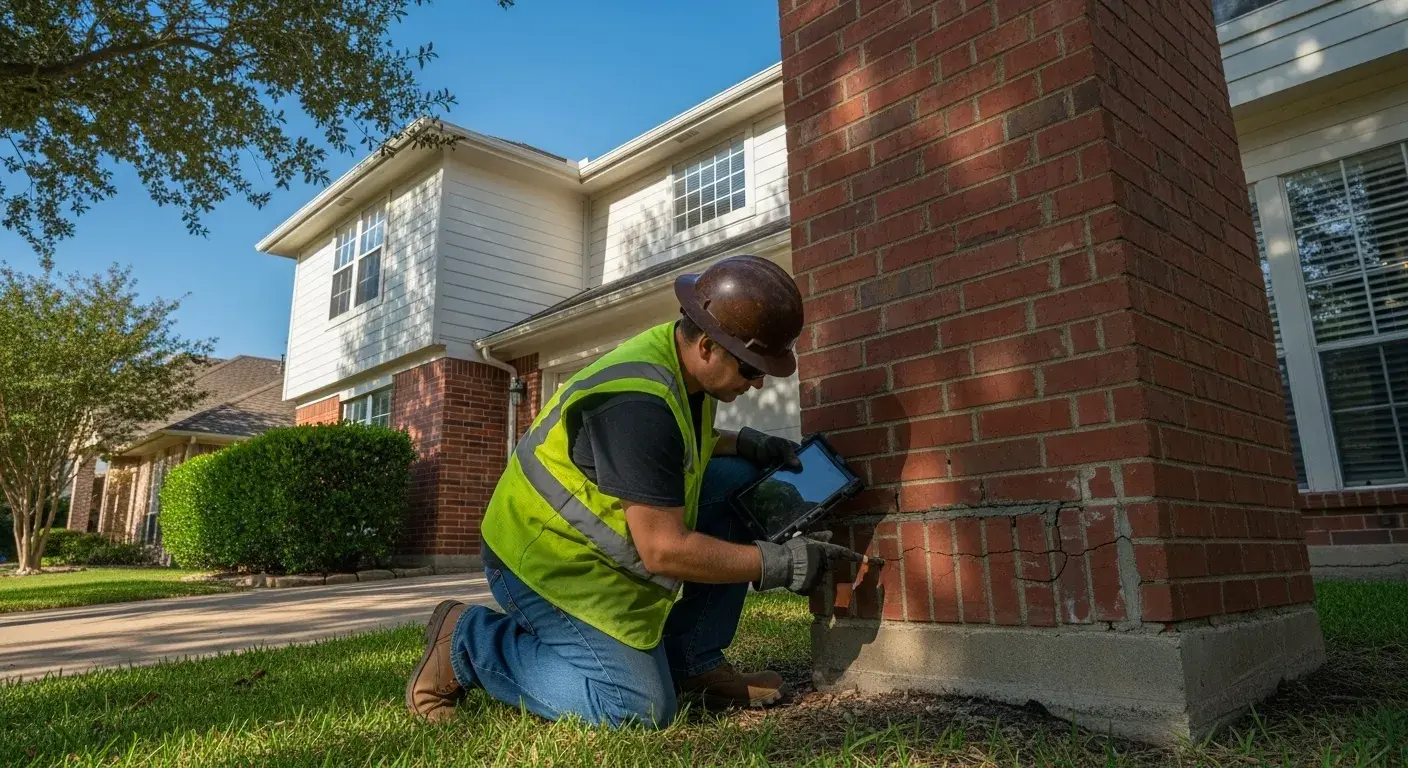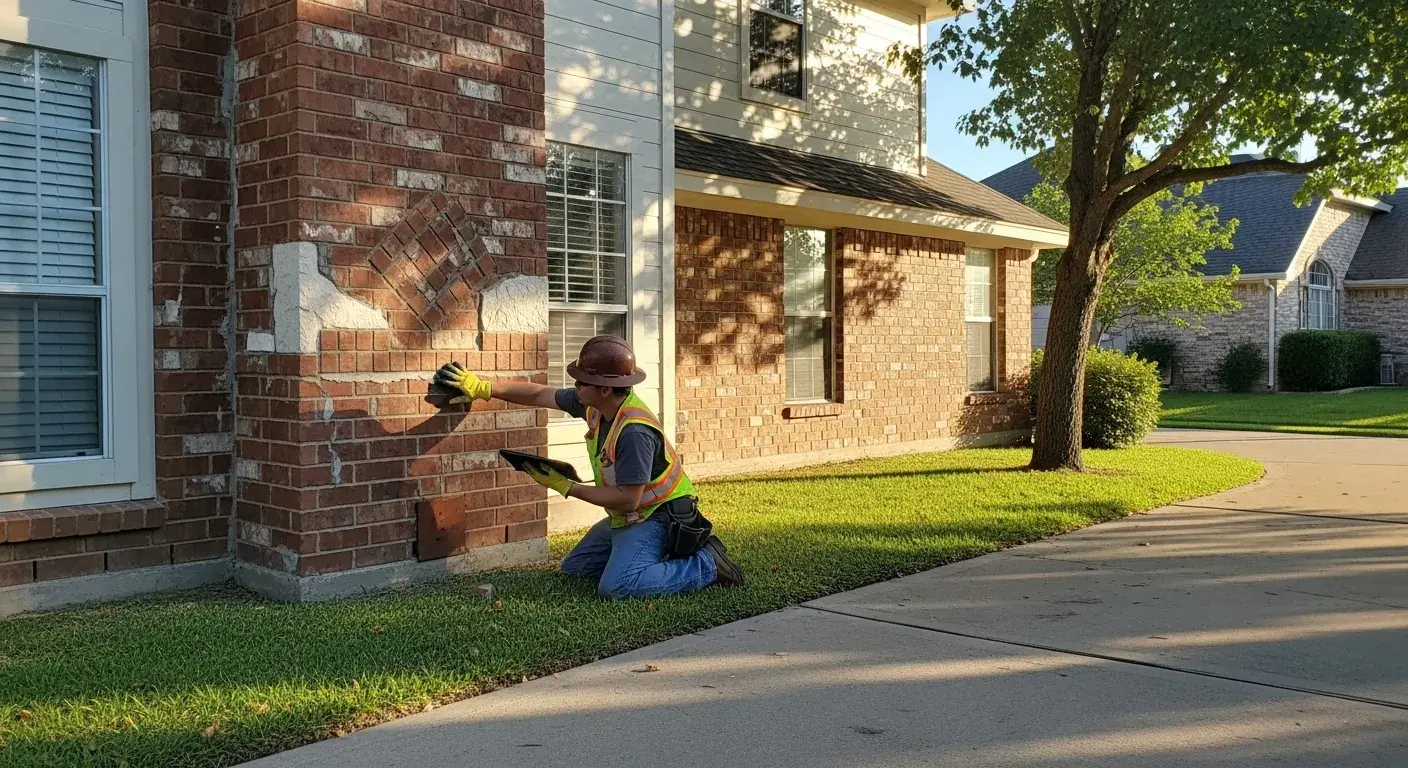Loading article...
What a professional chimney inspection in Katy really includes—levels, steps, and why it matters.


Mike Johnson
Senior Chimney Specialist
Published
10/30/2025
There’s a moment every homeowner has the first time we show them the inside of their chimney on camera. They lean in close, squint at the screen, and say something like, “Wait, that’s inside my chimney?”
The surprise is always the same — because while most people understand the value of a chimney sweep, few really grasp what a chimney inspection involves or why it’s one of the most important home safety checks you can schedule.
If you live in Katy, TX, where fireplace season can sneak up after long, humid summers, a professional chimney inspection isn’t a luxury — it’s protection. It’s how you know your system can handle heat, smoke, and pressure without risk.
Let me walk you through what really happens — start to finish — during a professional chimney inspection in Katy.
A clean chimney doesn’t always mean a safe chimney.
That’s the mistake most homeowners make. They assume if soot isn’t falling and smoke seems to vent fine, everything’s working. But inside, invisible issues may be forming: a cracked flue tile, a loose damper, or hidden moisture seeping into brickwork.
Those small problems can turn dangerous — fast.
At Katy Chimney Sweep, we’ve seen everything from slow carbon monoxide leaks to full flue collapses that could’ve been prevented with a routine inspection. That’s why the National Fire Protection Association (NFPA) recommends annual chimney inspections for every active fireplace — even if you rarely use it.
Because the truth is simple: what you can’t see can hurt you.
Every professional chimney inspection falls into one of three levels, depending on your home’s needs. Here’s how we define them at Katy Chimney Sweep:
This is the standard chimney inspection most homeowners in Katy, TX need each year. It covers:
A Level 1 chimney inspection is perfect for homeowners who use their fireplace regularly under normal conditions and haven’t noticed performance issues.
If you’ve had any chimney work, installed a new liner or appliance, or experienced an event (like a storm or lightning strike), you need a Level 2 chimney inspection.
This level includes everything in Level 1, plus:
We perform these often in Katy after major weather changes — our Gulf humidity and occasional high winds can compromise brickwork and flashing without obvious signs.
This is the most detailed inspection, usually reserved for severe damage, fire aftermath, or real estate transactions. It may involve removing sections of the wall or chimney structure for a complete safety assessment.
Few homeowners ever need a Level 3, but when they do, it can be lifesaving.
Let’s walk through what we actually do when inspecting your chimney — the process that separates a quick glance from a professional chimney inspection.
We start by protecting your home — drop cloths, sealed plastic barriers, and HEPA vacuums go in place before we even open the damper.
Katy’s fine soot dust can spread fast in humid air, so we ensure zero mess escapes the fireplace area. We also confirm power access for our inspection camera and lighting equipment.
It’s detail-oriented, but that’s the only way to maintain precision and cleanliness.
We begin outside, inspecting the chimney crown, cap, flashing, and masonry.
This is where we often find the first red flags: hairline cracks in crowns from Texas sun exposure, or flashing that’s separating due to thermal expansion. Both allow water intrusion — the number one silent destroyer of chimneys in our region.
We also check for signs of wildlife entry or nesting, especially after spring and summer.
Inside, we inspect the firebox, smoke chamber, and damper for cracks, gaps, or corrosion. We check the smoke shelf — the ledge that catches falling debris — for creosote accumulation.
This area gives us the first clues about your burn habits. Dark, sticky residue indicates low-temperature fires or unseasoned wood. Dry, powdery soot shows healthy airflow.
As local chimney professionals, we interpret these signs like doctors read X-rays.
Here’s where most homeowners’ jaws drop.
We feed a high-definition chimney camera up through the flue, scanning every inch of its interior. This tool lets us see what flashlights can’t — cracks in clay liners, separation between joints, hidden creosote glazing, and moisture staining.
You see exactly what we see — real footage of your chimney’s internal health.
For homeowners in Katy, TX, this step is especially crucial. Our high humidity means even minor condensation can corrode metal liners or loosen masonry joints over time. Without a camera inspection, you’d never know it was happening.
Next, we perform a draft test — a science-based way to measure how effectively smoke and gases rise through your chimney.
We use smoke pencils, pressure meters, and temperature gauges to assess airflow. Weak draft can signal hidden blockages, flue sizing issues, or negative air pressure in the home.
A proper chimney inspection doesn’t stop at “looks good.” We confirm the system performs safely under real conditions.
Once the inspection is complete, we provide:
We walk you through each point, so you understand exactly what’s happening and why it matters.
At Katy Chimney Sweep, education isn’t a bonus — it’s part of the service. We want homeowners to feel confident, not confused.
You might wonder, “Isn’t a chimney inspection the same everywhere?”
Not quite. Katy’s mix of humidity, temperature extremes, and sudden weather shifts means our inspections require extra attention in three key areas:
That’s why working with a local Katy chimney inspection professional matters — we know the patterns, the pitfalls, and the fixes.
Here’s the part that surprises almost everyone:
The goal of a chimney inspection isn’t to find something wrong — it’s to prove everything’s right.
It’s not about repairs; it’s about peace of mind. A good inspection gives you confidence that your fireplace system is sound, efficient, and ready for safe use.
Think of it like an annual health check — the earlier we catch small issues, the less likely you’ll face big, expensive ones later.
According to the NFPA, you should schedule a chimney inspection once per year, even if you don’t use your fireplace frequently.
But here in Katy, TX, we often recommend a pre-season check in the fall — before that first cool night tempts you to light a fire.
For heavier fireplace users or those burning wood often, a mid-season inspection may also be wise.
By the time we finish a chimney inspection, you’ll know more about your fireplace than most homeowners ever will.
You’ll see inside the flue. You’ll understand what healthy airflow looks like. You’ll know how to keep your system running cleanly and safely for years to come.
And you’ll walk away with one thing you can’t buy at any hardware store — peace of mind.
If it’s been over a year since your last chimney inspection, or if you’ve never had one done professionally, now’s the time.
At Katy Chimney Sweep, we go beyond basic — we show you what complete safety and performance look like.
Call today and experience the difference that local expertise, precision tools, and years of hands-on experience make.
Because your home deserves more than a quick glance — it deserves a real chimney inspection, done right from start to finish.

Senior Chimney Specialist
Mike Johnson is a certified chimney specialist with over 15 years of experience in chimney cleaning, repair, and maintenance. He specializes in Texas climate conditions and has helped hundreds of homeowners maintain safe and efficient chimney systems.

Start-to-finish look at a professional chimney inspection in Katy: tools, tests, and what we check.

Step-by-step: how a professional chimney check works in Katy, and why it matters.

What we check, how we test, and when each NFPA inspection level applies in Katy.